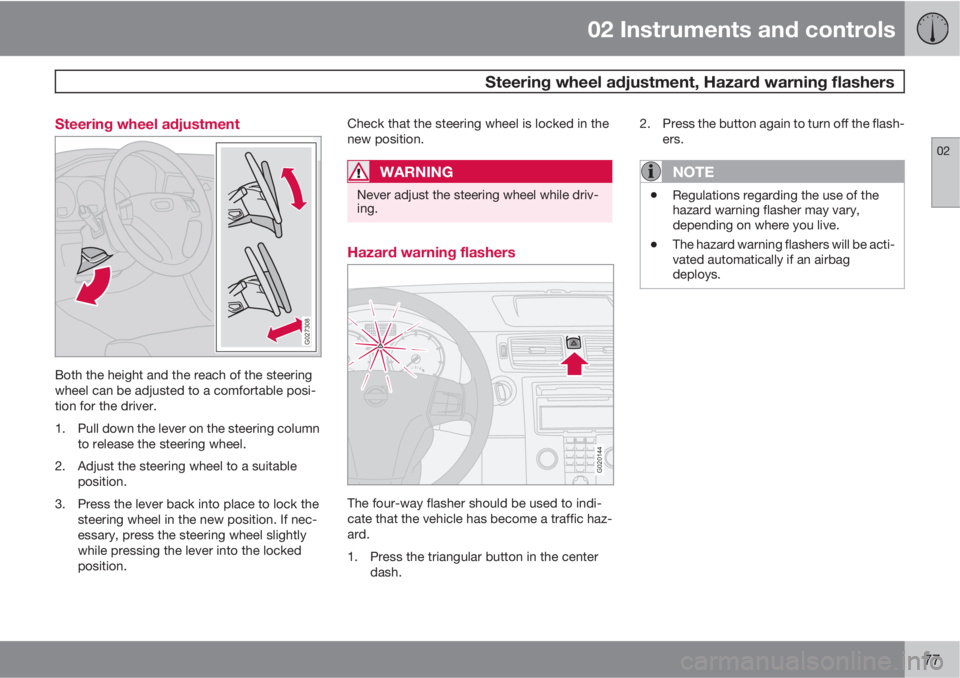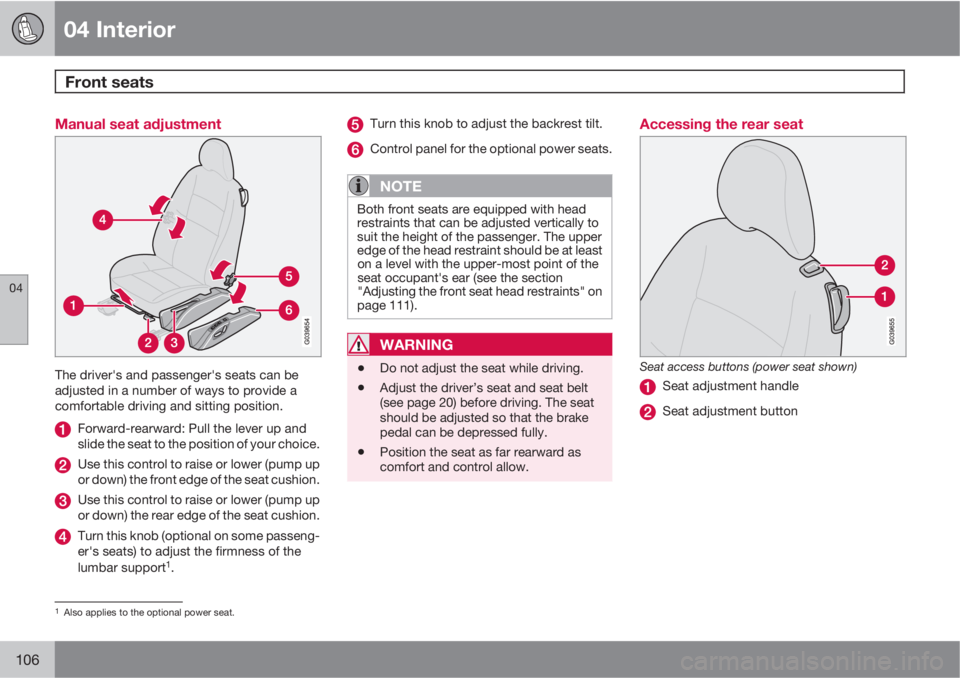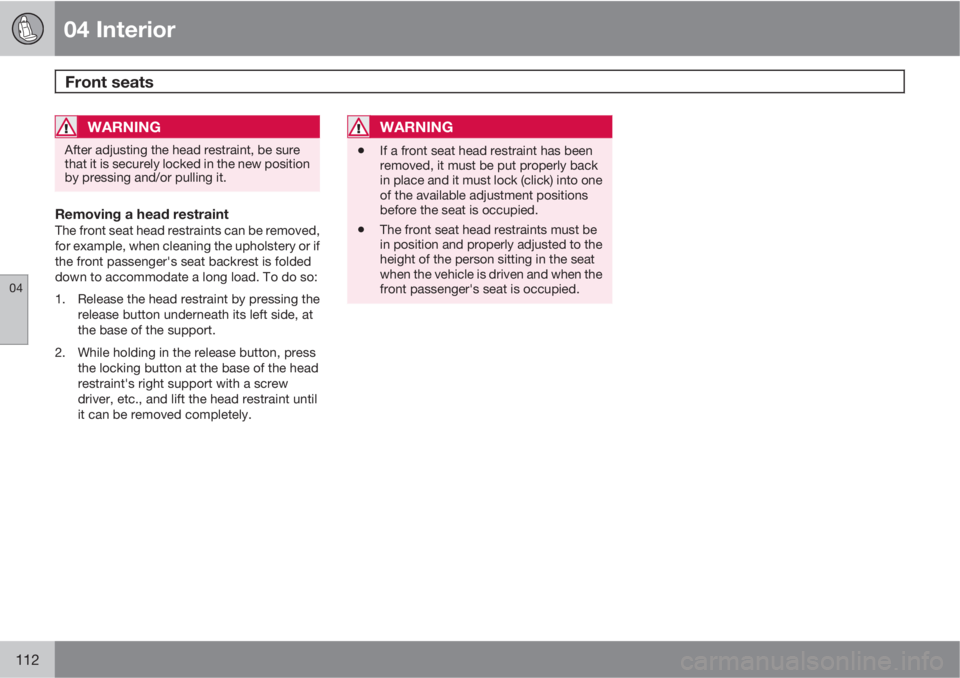height adjustment VOLVO C30 2013 Owner´s Manual
[x] Cancel search | Manufacturer: VOLVO, Model Year: 2013, Model line: C30, Model: VOLVO C30 2013Pages: 300, PDF Size: 6.58 MB
Page 79 of 300

02 Instruments and controls
Steering wheel adjustment, Hazard warning flashers
02
77 Steering wheel adjustment
G027308
Both the height and the reach of the steering
wheel can be adjusted to a comfortable posi-
tion for the driver.
1. Pull down the lever on the steering column
to release the steering wheel.
2. Adjust the steering wheel to a suitable
position.
3. Press the lever back into place to lock the
steering wheel in the new position. If nec-
essary, press the steering wheel slightly
while pressing the lever into the locked
position.Check that the steering wheel is locked in the
new position.
WARNING
Never adjust the steering wheel while driv-
ing.
Hazard warning flashers
G020144
The four-way flasher should be used to indi-
cate that the vehicle has become a traffic haz-
ard.
1. Press the triangular button in the center
dash.2. Press the button again to turn off the flash-
ers.
NOTE
•Regulations regarding the use of the
hazard warning flasher may vary,
depending on where you live.
•The hazard warning flashers will be acti-
vated automatically if an airbag
deploys.
Page 108 of 300

04 Interior
Front seats
04
106
Manual seat adjustment
The driver's and passenger's seats can be
adjusted in a number of ways to provide a
comfortable driving and sitting position.
Forward-rearward: Pull the lever up and
slide the seat to the position of your choice.
Use this control to raise or lower (pump up
or down) the front edge of the seat cushion.
Use this control to raise or lower (pump up
or down) the rear edge of the seat cushion.
Turn this knob (optional on some passeng-
er's seats) to adjust the firmness of the
lumbar support
1.
Turn this knob to adjust the backrest tilt.
Control panel for the optional power seats.
NOTE
Both front seats are equipped with head
restraints that can be adjusted vertically to
suit the height of the passenger. The upper
edge of the head restraint should be at least
on a level with the upper-most point of the
seat occupant's ear (see the section
"Adjusting the front seat head restraints" on
page 111).
WARNING
•Do not adjust the seat while driving.
•Adjust the driver’s seat and seat belt
(see page 20) before driving. The seat
should be adjusted so that the brake
pedal can be depressed fully.
•Position the seat as far rearward as
comfort and control allow.
Accessing the rear seat
Seat access buttons (power seat shown)
Seat adjustment handle
Seat adjustment button
1Also applies to the optional power seat.
Page 114 of 300

04 Interior
Front seats
04
112
WARNING
After adjusting the head restraint, be sure
that it is securely locked in the new position
by pressing and/or pulling it.
Removing a head restraintThe front seat head restraints can be removed,
for example, when cleaning the upholstery or if
the front passenger's seat backrest is folded
down to accommodate a long load. To do so:
1. Release the head restraint by pressing the
release button underneath its left side, at
the base of the support.
2. While holding in the release button, press
the locking button at the base of the head
restraint's right support with a screw
driver, etc., and lift the head restraint until
it can be removed completely.
WARNING
•If a front seat head restraint has been
removed, it must be put properly back
in place and it must lock (click) into one
of the available adjustment positions
before the seat is occupied.
•The front seat head restraints must be
in position and properly adjusted to the
height of the person sitting in the seat
when the vehicle is driven and when the
front passenger's seat is occupied.